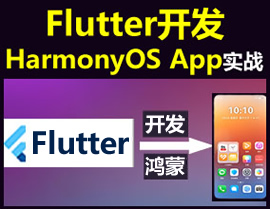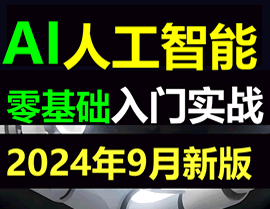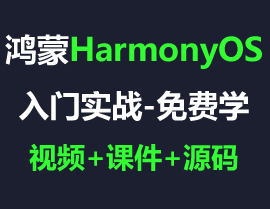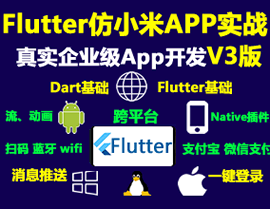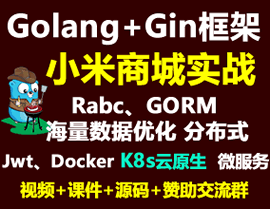Flutter内容创建或管理插件content_foundry的使用
Flutter内容创建或管理插件content_foundry的使用
Form-like UI用于编辑各种用户定义的内容。可以用于CMS前端。
该包目前处于活跃开发阶段——API可能会更改。
功能
-
支持的类型:
boolStringdoubleenum- 从String列表中选择structure- 带命名字段的集合list- 字段列表polymorphic- 可以有多种不同类型的字段(类似于JSON Schema的anyOf)nullable- 包裹任何字段的“包装器”字段,使其可为空(其他字段默认不可为空)
-
自定义字段。
-
自定义字段编辑器。
-
覆盖默认字段编辑器。
使用方法
示例代码
以下是一个完整的示例代码,展示了如何使用content_foundry插件来创建和管理内容。
import 'dart:convert';
import 'package:content_foundry/content_foundry.dart';
import 'package:flutter/material.dart';
void main() {
runApp(const MyApp());
}
class MyApp extends StatelessWidget {
const MyApp({super.key});
[@override](/user/override)
Widget build(BuildContext context) {
return MaterialApp(
title: 'Content Foundry Demo',
theme: ThemeData(
colorScheme: ColorScheme.fromSeed(seedColor: Colors.deepPurple),
useMaterial3: true,
),
home: const ContentFoundryPage(),
);
}
}
class ContentFoundryPage extends StatefulWidget {
const ContentFoundryPage({super.key});
[@override](/user/override)
State<ContentFoundryPage> createState() => _ContentFoundryPageState();
}
class _ContentFoundryPageState extends State<ContentFoundryPage> {
late Field _field;
late String _formattedValue;
final _encoder = JsonEncoder.withIndent(' ' * 2);
[@override](/user/override)
void initState() {
super.initState();
// 初始化字段
_field = StructureField(
properties: [
StructureFieldProperty(
name: 'Outer list',
field: ListField(
fieldFactory: (initialValue) {
return PolymorphicField(
typeFieldName: 'type',
valueFieldName: 'value',
initialValue: initialValue is Map<String, dynamic> ? initialValue : const {},
types: [
PolymorphicFieldType(
type: 'text',
displayName: 'Text',
description: '多行文本,可选对齐方式。',
fieldFactory: (defaultData) => StructureField.fromFieldMap(
fieldByName: {
'text': StringField(maxLines: null),
'align': EnumField(
choices: ['left', 'center', 'right', 'justify'],
).nullable(isNull: true),
},
),
),
PolymorphicFieldType(
type: 'image',
displayName: 'Image',
description: '互联网上的图片,可选宽高比。',
fieldFactory: (defaultData) => StructureField.fromFieldMap(
fieldByName: {
'url': StringField(),
'aspect_ratio': DoubleField().nullable(),
},
),
),
PolymorphicFieldType(
type: 'button',
displayName: 'Button',
description: '可配置强调的按钮。',
fieldFactory: (defaultData) => StructureField.fromFieldMap(
fieldByName: {
'title': StringField(),
'link': StringField().nullable(),
'emphasis': EnumField(
choices: ['primary', 'secondary', 'warning'],
value: 'primary',
),
},
),
),
],
);
},
),
),
StructureFieldProperty(
name: 'Another outer list',
field: ListField(
fieldFactory: (initialValue) {
return ListField(
fieldFactory: (initialValue) => StringField(),
);
},
),
),
StructureFieldProperty(
displayName: '浮点数',
name: 'double',
field: DoubleField(),
),
StructureFieldProperty(
name: 'string',
description: '多行文本',
field: StringField(
value: '初始字符串值',
maxLines: null,
),
),
StructureFieldProperty(
displayName: '可空枚举',
name: 'enum',
field: EnumField(
choices: ['left', 'center', 'right', 'justify'],
).nullable(isNull: true),
),
StructureFieldProperty(
displayName: '多态',
description: '此字段可以包含不同类型的数据',
name: 'polymorphic',
field: PolymorphicField(
typeFieldName: 'type',
valueFieldName: 'value',
types: [
PolymorphicFieldType(
type: 'text',
displayName: 'Text',
description: '多行文本,可选对齐方式。',
fieldFactory: (defaultData) => StructureField.fromFieldMap(
fieldByName: {
'text': StringField(maxLines: null),
'align': EnumField(
choices: ['left', 'center', 'right', 'justify'],
).nullable(isNull: true),
},
),
),
PolymorphicFieldType(
type: 'image',
displayName: 'Image',
description: '互联网上的图片,可选宽高比。',
fieldFactory: (defaultData) => StructureField.fromFieldMap(
fieldByName: {
'url': StringField(),
'aspect_ratio': DoubleField().nullable(),
},
),
),
PolymorphicFieldType(
type: 'button',
displayName: 'Button',
description: '可配置强调的按钮。',
fieldFactory: (defaultData) => StructureField.fromFieldMap(
fieldByName: {
'title': StringField(),
'link': StringField().nullable(),
'emphasis': EnumField(
choices: ['primary', 'secondary', 'warning'],
value: 'primary',
),
},
),
),
],
),
),
],
);
_updateValue();
_field.addListener(_onChange);
}
[@override](/user/override)
void dispose() {
_field.dispose();
super.dispose();
}
void _onChange() {
_updateValue();
setState(() {});
}
void _updateValue() =>
_formattedValue = _field.isValid() ? _encoder.convert(_field.getValue()) : 'Invalid';
[@override](/user/override)
Widget build(BuildContext context) {
return Scaffold(
appBar: AppBar(
title: const Text('Content Foundry'),
),
body: Center(
child: Row(
crossAxisAlignment: CrossAxisAlignment.stretch,
children: [
Flexible(
child: SingleChildScrollView(
child: ContentFoundryEditor(
field: _field,
),
),
),
Flexible(
child: Text(_formattedValue),
),
],
),
),
);
}
}更多关于Flutter内容创建或管理插件content_foundry的使用的实战系列教程也可以访问 https://www.itying.com/category-92-b0.html
更多关于Flutter内容创建或管理插件content_foundry的使用的实战系列教程也可以访问 https://www.itying.com/category-92-b0.html
content_foundry 是一个用于 Flutter 的内容创建和管理插件。它可以帮助开发者在应用中轻松地创建、管理和展示动态内容。以下是如何使用 content_foundry 插件的基本步骤:
1. 添加依赖
首先,你需要在 pubspec.yaml 文件中添加 content_foundry 插件的依赖:
dependencies:
flutter:
sdk: flutter
content_foundry: ^latest_version然后运行 flutter pub get 来获取依赖。
2. 初始化插件
在你的 Flutter 应用中初始化 content_foundry 插件。通常,你可以在 main.dart 文件中进行初始化:
import 'package:content_foundry/content_foundry.dart';
void main() async {
WidgetsFlutterBinding.ensureInitialized();
// 初始化 ContentFoundry
await ContentFoundry.initialize(
apiKey: 'YOUR_API_KEY',
projectId: 'YOUR_PROJECT_ID',
);
runApp(MyApp());
}3. 获取内容
使用 ContentFoundry 来获取和管理内容。你可以通过以下方式获取内容:
import 'package:content_foundry/content_foundry.dart';
class MyApp extends StatelessWidget {
@override
Widget build(BuildContext context) {
return MaterialApp(
home: Scaffold(
appBar: AppBar(
title: Text('Content Foundry Example'),
),
body: FutureBuilder(
future: ContentFoundry.getContent('content_id'),
builder: (context, snapshot) {
if (snapshot.connectionState == ConnectionState.waiting) {
return Center(child: CircularProgressIndicator());
} else if (snapshot.hasError) {
return Center(child: Text('Error: ${snapshot.error}'));
} else {
var content = snapshot.data;
return Center(
child: Text(content['title']),
);
}
},
),
),
);
}
}4. 管理内容
content_foundry 还提供了管理内容的功能,例如创建、更新和删除内容。你可以使用以下方法来管理内容:
// 创建内容
await ContentFoundry.createContent({
'title': 'New Content',
'body': 'This is a new content created using ContentFoundry.',
});
// 更新内容
await ContentFoundry.updateContent('content_id', {
'title': 'Updated Content',
'body': 'This content has been updated.',
});
// 删除内容
await ContentFoundry.deleteContent('content_id');5. 监听内容变化
你还可以监听内容的变化,以便在内容更新时自动刷新 UI:
ContentFoundry.onContentChanged('content_id').listen((content) {
print('Content changed: $content');
});6. 处理错误
在使用 content_foundry 时,可能会遇到各种错误。你可以通过捕获异常来处理这些错误:
try {
var content = await ContentFoundry.getContent('content_id');
} catch (e) {
print('Error: $e');
}
